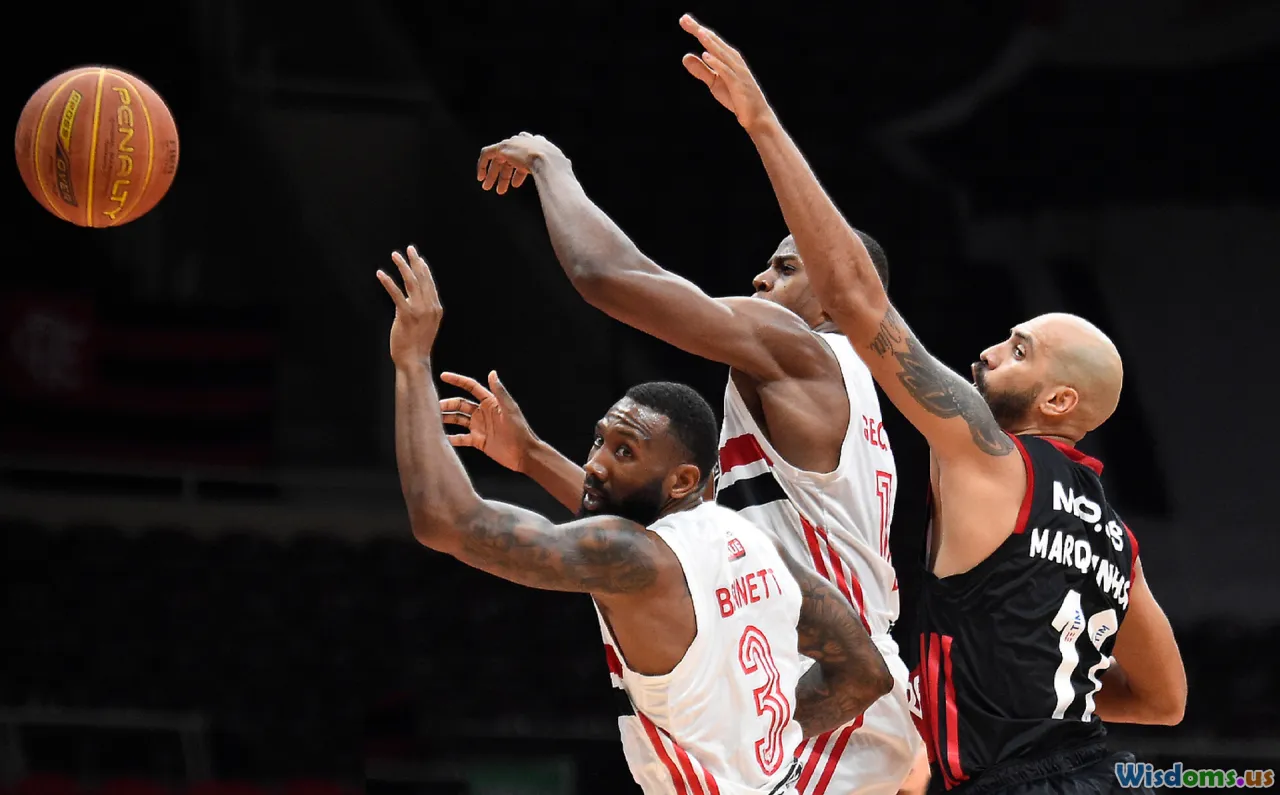
Is Data Overload Hurting Athlete Performance Improvement
14 min read Explore how excessive data collection can negatively impact athlete performance and decision-making in sports. (0 Reviews)
Is Data Overload Hurting Athlete Performance Improvement?
In today’s hyper-quantified sports world, it’s hard to find an athlete or coach who isn’t armed with wearables, video breakdowns, app dashboards, and specialized performance analysts. The age of Big Data has crashed into the age-old quest for sporting achievement—but is more always better?
Sports performance data promises untold insights, yet a swelling tide of stats and metrics is raising concerns. Some coaches and athletes worry that data overload may be doing as much harm as good, impeding improvement and decision-making rather than supporting it.
Dissecting Data Overload in Modern Sports

Data overload, or “analysis paralysis,” refers to the overwhelming sensation that can occur when confronted with too much information. In sports, this may look like athletes and coaches sifting through hundreds of data points: heart rate variability, sprint velocity, sleep cycles, GPS tracking, hydration status, player positioning, and even mood assessments.
Consider a professional footballer at a top European club. According to a study by UEFA, elite teams now evaluate over 100 different metrics per player after every match. That’s before factoring in biometric trends captured daily during practice, nutritional guidance from dieticians, as well as real-time feedback streamed into smart devices during workouts.
While each data nugget offers potential benefit, layering them indiscriminately can impair:
- Decision-Making: Excessive options can paralyze action (“Which stat really matters now?”).
- Focus: Attention is split between competing metrics rather than directed toward practice or tactical intent.
- Mental Fatigue: Constant self-tracking may grow exhausting, or erode trust in natural ‘feel’. As USA Olympian swimmer Katie Ledecky shared, “Sometimes you just have to step away from the numbers and swim by the feel of the water.”
The Science: When Numbers Become Noise

Many popular sports embrace analytical complexity. Yet research into cognitive performance warns about the side effects of too much information. The field of cognitive load theory illustrates that human brains have finite working memory. Dr. John Sweller’s studies show that once a threshold is reached, additional data doesn’t enhance learning; it clouds judgment instead.
In a sports context, this cognitive bottleneck may hinder performance improvement. A 2022 paper in the International Journal of Sports Science & Coaching tracked collegiate basketball players exposed to increasing layers of post-game analysis. Despite coaching intentions, excessive feedback led to confusion and worse retention of tactical plans compared to concise analog summaries.
Take marathon running as another example. Wearable tracking (Garmin, Whoop, Polar, etc.) offers runners second-by-second breakdowns of stride length, cadence, elevation, lactate levels, and VO2 Max estimates. While some adaptively respond, others become fixated on outlier stats that don’t matter mid-race—ultimately underperforming versus previous, less-data-loaded efforts.
Essential vs. Excess: Prioritizing What Matters

How can coaches and athletes avoid drowning in a sea of stats? The answer lies in discerning between actionable insights and extraneous information.
1. Identify the Performance Goal
Start with the key objective: Is the aim to improve split times, tactical awareness, injury prevention, or something else? Stick to data streams tightly linked to the main goal. For instance, a tennis player seeking better first-serve percentages does not benefit from deep sleep analytics overriding feedback on serve accuracy.
2. Limit Key Metrics
The All Blacks rugby team, famous for blending tradition with innovation, allocate just three or four core metrics per player, per week. Rather than a hundred stats, they monitor those that directly influence on-field performance and well-being, such as micro-injury risk markers, running distance during play, and player readiness scores.
3. Schedule Reflection, Not Continuous Monitoring
Stanford sports psychologist Dr. Andrea Anderson recommends integrating data review into periodic feedback sessions, not during play or immediately after errors. Reserving analysis for planned intervals helps avoid the stifling effect of constant numerical self-scrutiny.
Real-World Sport Example: Data Discipline in the NBA

NBA franchises spearhead analytics. However, franchises like the 2021-22 Miami Heat have refined their approach to avoid overloading athletes.
Rather than overwhelming their roster with all-encompassing player-tracking data, the Heat’s performance staff collaborates with athletes to highlight only two parameters pre-game—say, off-ball movement rate and shot selection tendencies. These stats are then set aside during the contest, so players interact with coaches and teammates naturally, focusing on instinct in the moment. Post-game, a targeted feedback loop allows select video clips and metrics to be reviewed collaboratively.
This streamlined pathway has correlated positively with in-season player improvement and injury reduction. As Heat assistant coach Eric Glass shared: “Our guys don’t need to see 50 charts—we zero in on what gives us an edge.”
The Mental Game: Psychological Effects of Data Overconsumption

Performance anxiety is nothing new in elite athletics. What’s changing is its relationship to data. Researchers at the University of Bath (UK) found that athletes compulsively monitoring physical or tactical data reported higher stress levels and decreased enjoyment.
This has led to a mindfulness movement in sports. Athletes like Simone Biles and Novak Djokovic have spoken of switching off tech, returning to rituals and intuitive play, and trusting trained reflexes.
Key insights include:
- Information Detox: Reclaiming training sessions without tracking every variable.
- Trusting Intuition: Relying on bodily awareness and experienced coach feedback over statistical interpretation where appropriate.
- Promoting Flow State: Preserving the in-the-moment focus that psychologists like Dr. Mihály Csíkszentmihályi cite as crucial for elite performance.
Tools & Strategies for Combating Data Overload

It’s unrealistic to completely shun data, especially at the elite or developmental level. But applying smarter protocols can yield the benefits of analytics without the drawbacks:
Curated Dashboards
Teams are increasingly leveraging aggregator apps and customized dashboards that only surface game-critical or trend-change data points. For example, EPL soccer teams use Catapult or STATSports systems to build athlete- and coach-friendly interfaces that flag injuries or zone entries, rather than presenting everything at once.
Data Periodization
Borrowed from training theory, data periodization means selectively focusing on specific metrics during certain training phases. A distance runner may fixate on cadence and heart rate during base-building, shifting emphasis to sprint splits and running economy as competition nears.
Coach as Information Filter
The most crucial “technology” remains the keen coach. Experienced mentors are adept at interpreting swathes of data, dialing in messages that resonate at just the right moment. The San Francisco Giants baseball club is a case study: data scientists and coaches meet to extract “game nuggets” that are then tailored to each athlete’s preferences and needs.
When Data Fails—Stories from the Field

Not all integrations go smoothly. Examples abound where well-intentioned analytics trips up an athlete or organization.
Case 1: The Cyclist Who Obsessed Over FTP
2023 Tour de France competitor Jasper Müller (name changed for confidentiality) carried four gadgets monitoring Functional Threshold Power (FTP), cadence, heart rate, and environmental conditions. After each stage, he spent hours obsessing over marginal statistics. What resulted? Disrupted sleep, anxiety, and eventually, performance slumps. It was only after a mid-race intervention with a sports psychologist—who advised a digital reset—that Müller reported newfound energy and concentration, leading to a strong finish.
Case 2: Soccer Academy Meltdown
A youth soccer academy in Germany gave players daily biometric feedback via a smartphone app, displaying everything from sleep quality scores to stress indices. Within two weeks, 60% of players reported increased anxiety, with several flagging feeling “watched all the time.” Coaches reverted to sharing just two daily metrics—minutes played and intensity effort—and noted improvements in team unity and focus.
The Path Forward: Harmonizing Human Wisdom and Data Power

At its best, data augments—rather than replaces—human instincts and expertise. Successful organizations now blend real-world wisdom and analytics, seeking balance rather than raw quantity.
Personalized Approaches
Rather than a blanket approach, smart teams acknowledge that each athlete processes and benefits from analytics differently. Goalkeeper coaches may favor visual video clips, while midfielders focus on running stats. Personalization curbs the impulse to deliver data for data’s sake.
Encourage Athlete Ownership
Some of the world’s leading sports squads ask athletes themselves which metrics are meaningful for them. When runners at the Bowerman Track Club in Oregon shape their own benchmarking schemes, adherence increases and anxiety falls.
Education Over Dictation
Education sessions about what each stat means—and what it doesn’t—create an environment where athletes use data to drive performance, not neuroticism. As data scientist Kirk Goldsberry once remarked, true insight “requires cutting through the signal, not getting lost in the noise.”
Athletic mastery is as much art as science. Today’s data explosion holds immense promise, but misapplied numbers can muddy the path to greatness. By prioritizing quality over quantity, integrating data with wise coaching, and respecting athlete individuality, performance improvement becomes less about the quantity of data—and more about making every data point count.
Rate the Post
User Reviews
Popular Posts

















